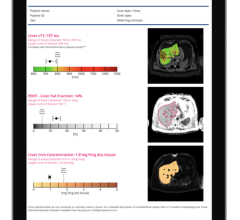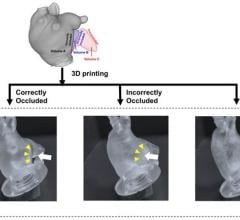November 15, 2007 – Toshiba America Medical Systems Inc. today introduced a fourth generation contrast-free imaging technique, Time and Space Angiography (TSA), which creates images that show dynamic blood flow without using contrast agents.
Toshiba says that it is further expanding the capabilities and safety of MRA imaging, and TSA will have a variety of clinical benefits to improve both diagnostic confidence and patient care and safety. TSA builds upon the Time-Spatial Labeling Inversion Pulse (Time-SLIP) technique and is especially desirable for patients with compromised circulations and renal flow problems. It features an extremely high temporal resolution and a continually changing inversion pulse time, creating dynamic images showing blood flow in motion.
In patients with symptoms of stroke, TSA is able to show blood flow into the brain and clearly display the area being impeded, which aids physicians in faster, more accurate diagnosis. For neurologists, the use of TSA will enable the diagnosis of cerebral spinal fluid diseases non-invasively.
This alternative non-contrast technique may be useful as gadolinium-based contrast agents, commonly used in MRA, have been directly linked to nephrogenic systemic fibrosis, also known as nephrogenic fibrosing dermopathy (NSF/NFD), a sometimes fatal disease that occurs in patients with renal insufficiency. According to a recent study by rheumatologists at Massachusetts General Hospital1, NSF cases could reach epidemic proportions. The study found that NSF affected 30 percent of hemodialysis patients who were exposed to gadolinium during a MR exam. Previous studies had estimated only a 2 to 5 percent incidence for developing NSF after receiving gadolinium.
For more information: www.medical.toshiba.com


 October 31, 2025
October 31, 2025 








